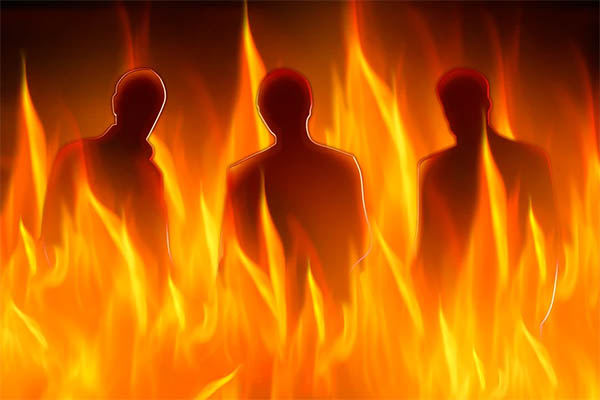
No Credit
AM radio stations in Pakistan broadcast non-stop recitation and translation of the holy Quran, a boon to someone like me who has not read the Quran carefully and can greatly benefit—especially as I focus more when I hear something clearly said.
The last such recitation I heard was an ayat in which Allah proclaims: “Do you know what haavia is? You don’t know.” A description of hell follows, with a separate ayat saying more or less the same thing: “Do you know what hutama is?”
We usually talk of Hell in Persian. ‘Dauzakh’ is the most commonly used word. But ‘jahannum’ is more literary and is Arabic. However, if you read the Quran, hell is referred to with several words and under many categories. This has led some to say that there are seven hells.
In this gradation of seven hells, ‘jahannum’ is not the most frightening. In fact, it is number six in intensity. The most painful hell is ‘haavia.’ Who will burn in ‘haavia’? Interestingly, those who don’t abide by a work ethic; it will be mostly dishonest businessmen. Needless to say, ‘haavia’ would be populated with many Muslim businessmen, because they have completely replaced work ethic with worship.
The first (and least painful?) hell would be ‘saqar’. The root emphasizes the heat of the sun and the burning it produces. This will be a residence for fools and those in error. It is clear that there is mitigation involved in this category.
The second hell is ‘sa’eer.’ The root points to roasting and hunger and will house those who embezzle the property of orphans. There is a special emphasis in the Quran on good conduct toward orphans. Hence a special hell for the transgressors.
The third hell is ‘laza.’ This hell is for misers and those who turn their back on Islam. The root points to a pure fireball. Somehow, a great curse in Islam is laid on the miser, which points to a degree of psychological analysis in the Holy Writ.
The fourth hell is ‘hutama,’ the hell in which the hearts of pagan people would burn. The root points to the process of getting splintered after drying out because of heat. The word (hatama) is also used to indicate a dry year.
The fifth hell is ‘jaheem.’ This is where the blasphemers and the proud will burn. ‘Jahaam’ also means miserly in Arabic. The root indicates the process of burning inside the heart of a man who collects money and is miserly.
The sixth hell is ‘jahannum.’ This is the common Urdu word we use for hell. It is also connected with the Bible where it finds mention. The root indicates a deep dark pit. It also contains the name of a man (Nahum) who owned the place near Jerusalem. The dark piece of earth belonging to Nahum was where pagans once sacrificed human beings. It inspired men with great fear. We also use the word ‘jahannum’ more because this hell is meant for Muslims.
‘Haavia’ is the most painful hell of all. It is for those who are dishonest in business. Muslims who have forgotten this supra-ibadaat (worship) tradition of Islam’s Prophet (PBUH) in his pre-Islamic businessman role might all be sent here. The root also gives us hawa, which means greed.
The Old Testament uses sheol, which is close to the Arabic ‘sha’al,’ meaning spark of fire. The Urdu word ‘shola’ may derive from the same roots. However, it is the New Testament that indicates burning in the fires of hell. Islamic hell is close to the idea of hell in the New Testament and the Zoroastrian hell as described in Parsi scriptures as ‘dauzakh’ with a sense of piercing.
